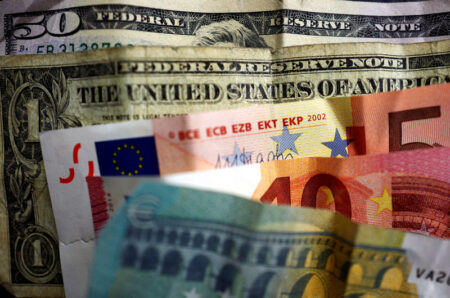Even with U.S. stocks in a new bull market, investors aren’t showing many signs of backing away from money-market funds and other cash-like investments offering yields of about 5%, the highest in about 15 years.
Money-market funds hit a record of $5.9 trillion in assets as of Tuesday, signaling a continuing drain out of bank deposits into higher-yielding “cash-like” investments, according to Peter Crane, president and publisher of Crane Data.
He expects the tally soon to eclipse $6 trillion and then to stay elevated, even though money-market assets already grew almost 18% in May from a year ago.
“It’s clear that bank deposits have sprung a leak,” Crane said, pointing to regional bank failures in March that spooked depositors and money-market funds recently offering yields closer to historical averages.
While the Federal Reserve’s interest rate rises may have created carnage in stocks and bonds last year, it also set up money-market funds to quickly reflect higher yields associated with the central bank’s monetary tightening cycle to combat inflation.
It also helps that money-market funds have been a key source of demand for the Federal Reserve’s reverse repo facility, which has been paying up to 5% overnight on some $2 trillion in assets for the past year.
“If you told me five years ago we were going to be getting 5% on cash, I’d call you crazy,” said Mike Reynolds, vice president of investment strategy at Glenmede. “We think we are still in a bear market [for stocks], and this is a shorter-term blip in a longer-term trend.”
‘Wall of cash’
With the S&P 500 index
SPX,
qualifying for an exit from its longest bear-market stretch since 1948, it’s logical to ask if investors clinging to a mountain of cash are being too conservative.
While the end of the bear market hinges on the index closing at least 20% above its bear-market low, it doesn’t guarantee it from slipping back, particularly if a U.S. recession unfolds.
Michael Rosen, co-founder and chief investment officer of Angeles Investments, which advises endowments, foundations and private pension funds, still thinks a lot of cash on the sidelines and sustained bearishness about stocks could be a signal to move into stocks.
“You get maximum bearishness near the bottom on the market and maximum bullishness at top of the market,” Rosen said.
But Crane, a 30-year veteran of the money-market world, doesn’t expect bulls touting the “wall of cash on the sidelines” to result in flows into equities.
“There’s no correlation to assets in money funds and the stock-market,” he said, adding that instead institutional players like corporations mostly use money-market funds to deal with their cash balances.
“Saying that all of the sudden investors are going to get tired of 5% yields is a stretch,” Crane said.
Tame T-bill deluge
Money-market funds serve as a key cog in the financial plumbing of markets because they hold “cash-like” investments that quickly repay, including 1-month
TMUBMUSD01M,
Treasury bills. The bill market includes securities that mature in 52-weeks or less.
The funds also are seen as a crucial source of demand as markets brace for an up to $1 trillion deluge of new Treasury issuance this summer to refill U.S. coffers run low by the debt-ceiling fight in Congress.
See: Money-market funds own only 15% of the Treasury bill market, but that could change dramatically once Congress passes a debt ceiling deal
“Clearly, the debt-ceiling resolution is allowing the Treasury to issue,” said John Tobin, chief investment officer at Dreyfus, a money-market fund manager and a division of BNY Mellon Investment Management.
Use of the Fed’s reverse repo facility has declined by almost $150 billion since May, Tobin said, noting that recent auctions have gone off without a hitch, as his and other money-markets have been deploying cash. He expects overall repo balances to retreat by as much as $300 billion.
“I don’t see an issue,” Tobin said, adding that money-markets are eager to lock in higher yields to protect against rate cuts in the future. “All this supply will be absorbed. Money-market funds already were buying longer-dated securities because we do know we are approaching terminal rates.”
Stocks closed mostly higher Wednesday, with the Dow Jones Industrial Average
DJIA,
off 0.7%, the S&P 500 0.1% higher and the Nasdaq Composite
COMP,
up 0.4%, after the Federal Reserve left interest rates unchanged in June, but signaled more could be in store this year to fight inflation.
See: Fed skips June interest-rate hike, but points to two more increases this year
Read the full article here













